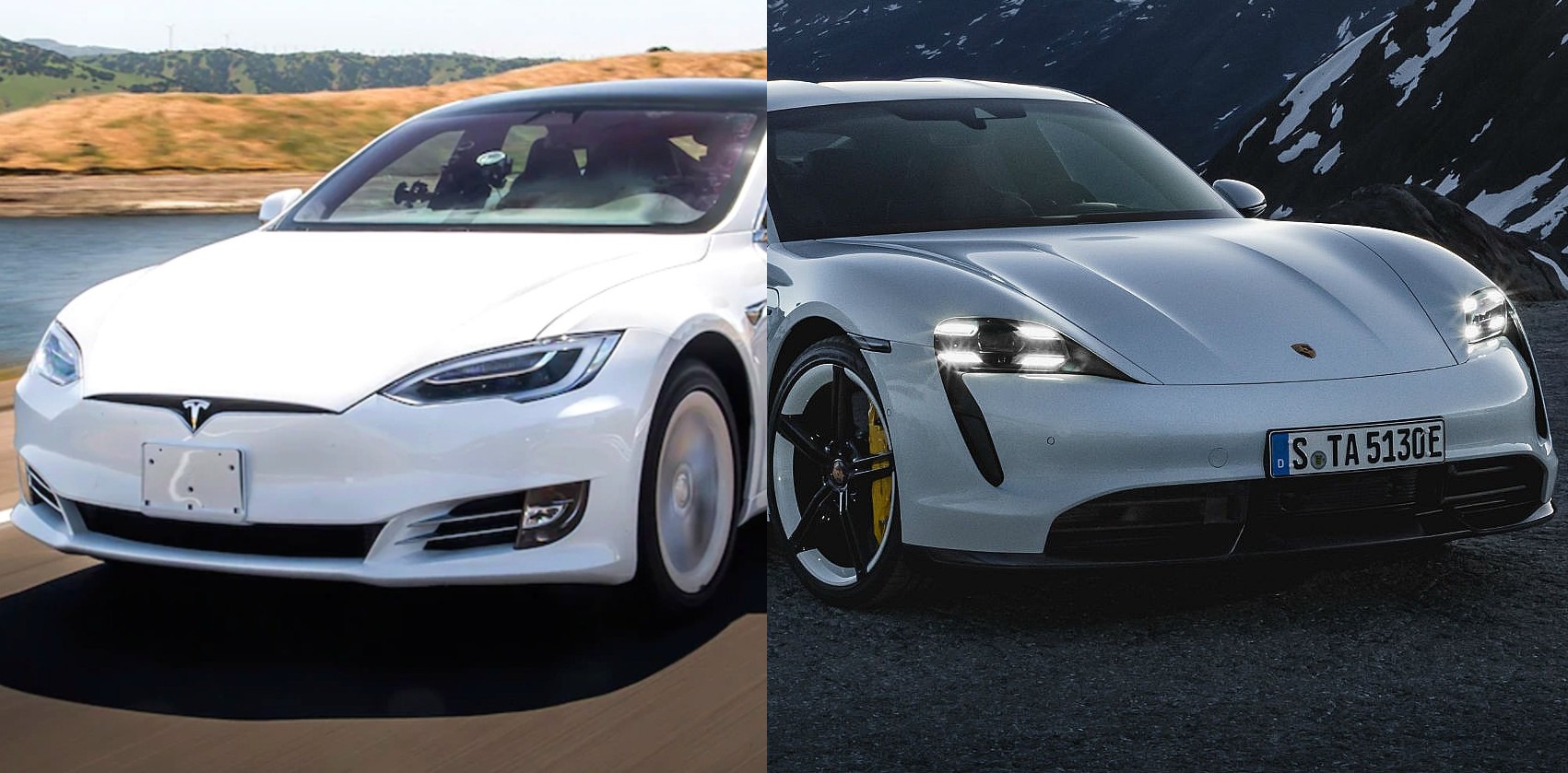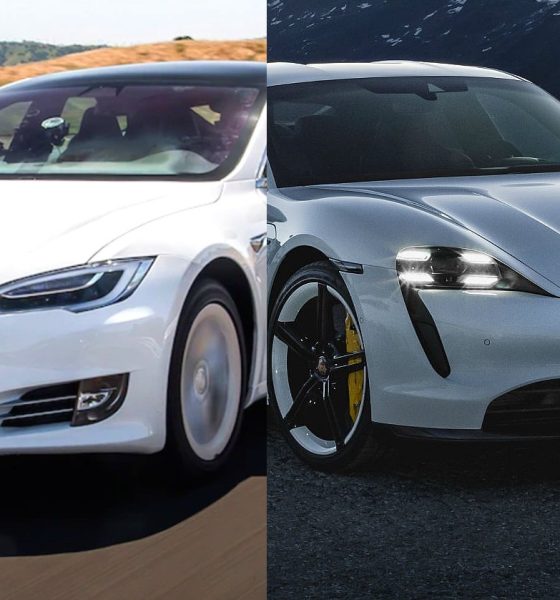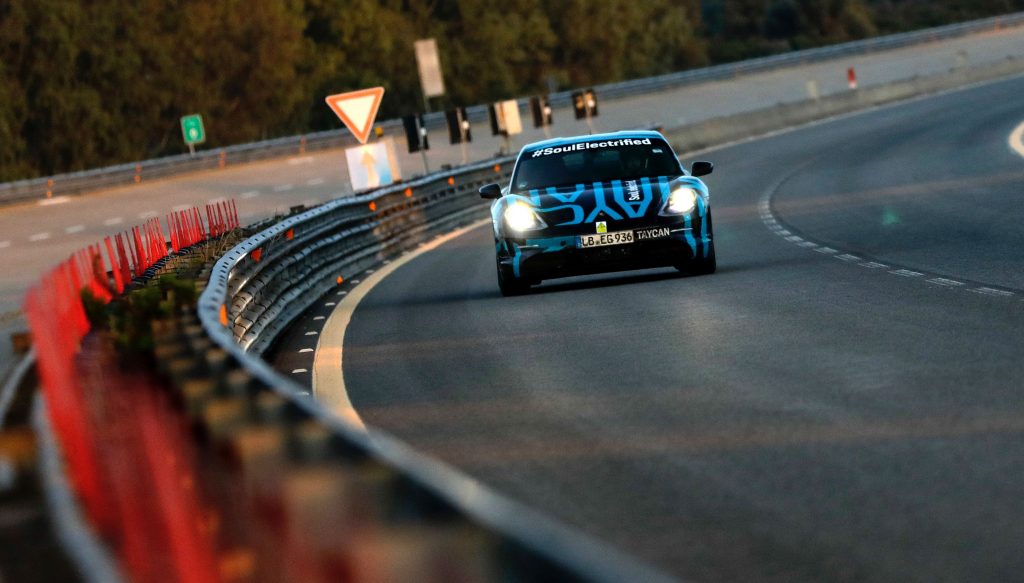

Lifestyle
Tesla vs Porsche: Inside the emerging Nurburgring EV arms race
The results of Tesla’s brief time in Germany’s famed Nürburgring racetrack were impressive. During their stay, Tesla’s two Model S “Plaid” powertrain prototypes showcased great potential, at one point finishing a hand-timed lap of 7 minutes 23 seconds, about 20 seconds faster than the Porsche Taycan, a vehicle that was honed on the historic racecourse. This was made possible by a Silicon Valley-style strategy that allowed the electric car maker to push its vehicles to the limit and establish a presence in the nearly 13-mile track with authority.
The Upstart Newcomer
Elon Musk’s announcement of the Model S’ excursion to the Nürburgring was not universally supported, with some doubting the electric sedan’s capability to take on the “Green Hell,” and others dismissing the proclamation of as plain old “bulls**t.” The Tesla Model S, after all, is known for out-accelerating supercars in a straight line, but the vehicle is prone to throttling its power when driven hard on a closed circuit. To address this, Musk deployed two Model S prototypes, both of which were equipped with a “Plaid Powertrain” setup that featured three electric motors, racing-optimized tires, fenders, a new spoiler, and a slightly different fascia with a bigger air intake. These vehicles were track-worthy.
Tesla’s efforts to set up its Nürburgring sessions was commendable. Not long after Elon Musk’s announcement of the upcoming track runs, a Model S was spotted being transported to the circuit. A Supercharger was set up in the vicinity of the racetrack as well, allowing the prototype vehicles to recharge their batteries in between laps. Tesla seemed to have brought two vehicles, a red prototype accompanied by a blue unit. Reports claim that at least one of the vehicles was stripped of its interior to reduce weight, though images captured of the red Plaid Model S prototype hint that the sedan still had a passenger seat and door trims.
The Old Guard
What is rather ironic is that Tesla’s initiatives at the Nürburgring seemed to be a response to the feat of the Porsche Taycan, which set a record of 7 minutes 42 seconds around the track prior to its official unveiling. Musk has extended his praise for the Taycan on Twitter, stating that the vehicle seems like a good car, and mentioning that its track time at the Green Hell was “great.” While it seemed like Tesla rushed to get the Model S Plaid prototypes to the Nürburgring, it turned out that there was no rush needed at all.
This is because the Taycan’s 7:42 lap record was not officially sanctioned by the Nürburgring. In a statement to Jalopnik, Porsche described the Taycan’s time as “one for ourselves that we use as a point of historical record.” This is the reason that the Taycan’s lap time is not listed among the Nürburgring’s records. That being said, the German carmaker noted that the prototype it utilized for the run was production-spec, which meant that it was not stripped of any unnecessary weight. Porsche even stated that the Taycan it used for its Nürburgring run was actually heavier due to its roll cage, and it had stock tires on.
Quite interestingly, reports have emerged stating that Porsche utilized a Taycan Turbo prototype for its Nürburgring run. This is a rather interesting point, considering that the vehicle used by the company for its record lap was equipped with large yellow brake calipers, which is an option for the higher-end Porsche Taycan Turbo S (the Turbo comes with white calipers). Provided that these reports are true and Porsche did use its less powerful Turbo prototype for its “record attempt” at the nearly 13-mile track, the carmaker’s upcoming rounds with its Taycan Turbo S would be very interesting. The vehicle could definitely raise the stakes if it closes in or beats the Plaid Model S prototype’s 7:23 hand-stopped lap time.

An impending Nürburgring arms race
So what was the result of Tesla’s Silicon Valley-style approach to the Nürburgring? A lot of achievements and respect gained from professionals alike, actually. Professional race driver Robb Holland, who was initially skeptical about Tesla’s Nürburgring attempt, noted in an updated article that he commends Tesla for putting in the right effort, and for achieving a time that is not simply fast for an electric car or a four-door sedan with seven seats; but just plain fast. Tesla’s announcement that its Plaid Model S prototypes will be going for a 7:05 time when they return to the Nürburgring next month hints that more impressive feats could be expected.
Tesla’s Nürburgring session this time around ended with a 7:24 lap time and one of its red Plaid Model S prototypes being pushed hard enough that it retired in the middle of a run. With Tesla’s departure, a number of details have emerged about the electric car maker’s vehicle. For one, each Plaid prototype seemed to be capable of running five or six full laps at full speed around the Nürburgring per day, which is already close to that of high-performance ICE cars. Each vehicle was also charged after every lap, though it is unclear if this was due to heating issues or if Tesla was simply topping up lost range.
What is known from eyewitnesses, unofficial track timers, and racing drivers during Tesla’s testing days was that the Plaid Model S prototypes were very, very fast. In an article on auto news site Jalopnik, Holland mentioned that drivers operating other high-performance vehicles at the Nürburgring stated that the Model S Plaid prototypes were frighteningly fast when they ran their laps, to the point where the vehicles would almost vanish from another high-performance car with capable drivers.
Porsche did not establish its reputation by staying still when there is a powerful new challenger in the field. With Tesla establishing that its upcoming Plaid Model S is fast and track-capable, the German carmaker will likely respond with an equally impressive demonstration, perhaps with the Taycan Turbo S (provided that its initial run was conducted with a Turbo unit, of course) or an even more track-worthy car. For Klaus Zellmer, president and CEO of Porsche Cars North America, Tesla’s challenge is something that is more than welcome. “We call ourselves a true sports car manufacturer, and there aren’t that many ways to prove that it is a true sports car,” he said in a statement to CNET Roadshow.
As Elon Musk has said, now it’s game, set, match.

Lifestyle
Tesla Model S Plaid battles China’s 1500 hp monster Nurburgring monster, with surprising results
There is just something about Tesla’s tuning and refinement that makes raw specs seem not as game-changing.

The Tesla Model S Plaid has been around for some time. Today, it is no longer the world’s quickest four-door electric sedan, nor is it the most powerful. As per a recent video from motoring YouTube channel Carwow, however, it seems like the Model S Plaid is still more than a match for some of its newer and more powerful rivals.
The monster from China
The Xiaomi SU7 Ultra is nothing short of a monster. Just like the Model S Plaid, it features three motors. It also has 1,548 hp and 1,770 Nm of torque. It’s All Wheel Drive and weighs a hefty 2,360 kg. The vehicle, which costs just about the equivalent of £55,000, has been recorded setting an insane 7:04.957 at the Nurburgring, surpassing the previous record held by the Porsche Taycan Turbo GT.
For all intents and purposes, the Model S Plaid looked outgunned in Carwow’s test. The Model S Plaid is no slouch with its three motors that produce 1,020 hp and 1,420 Nm of torque. It’s also a bit lighter at 2,190 kg despite its larger size. However, as the Carwow host pointed out, the Model S Plaid holds a 7:25.231 record in the Nurburgring. Compared to the Xiaomi SU7 Ultra’s record, the Model S Plaid’s lap time is notably slower.
Real-world tests
As could be seen in Carwow’s drag races, however, Tesla’s tech wizardry with the Model S Plaid is still hard to beat. The two vehicles competed in nine races, and the older Model S Plaid actually beat its newer, more powerful counterpart from China several times. At one point in the race, the Xiaomi SU7 Ultra hit its power limit due to its battery’s temperature, but the Model S Plaid was still going strong.
The Model S Plaid was first teased five years ago, in September 2020 during Tesla’s Battery Day. Since then, cars like the Lucid Air Sapphire and the Xiaomi SU7 Ultra have been released, surpassing its specs. But just like the Model Y ended up being the better all-rounder compared to the BYD Sealion 7 and the MG IM6, there is just something about Tesla’s tuning and refinement that makes raw specs seem not as game-changing.
Check out Carwow’s Model S Plaid vs Xiaomi SU7 drag race video below.
Lifestyle
500-mile test proves why Tesla Model Y still humiliates rivals in Europe
On paper, the BYD Sealion 7 and MG IM6 promised standout capabilities against the Model Y.

BYD is seeing a lot of momentum in Europe, so much so that mainstream media has taken every opportunity to argue that the Chinese automaker has beaten Tesla in the region. But while BYD sales this year in Europe are rising and Tesla’s registrations remain challenged, the raw capabilities of vehicles like the Model Y are difficult to deny.
This was highlighted in a 500-mile challenge by What Car? magazine, which showed that the new Tesla Model Y is more efficient, cheaper to run, and more reliable than rivals like the BYD Sealion 7, and even the nearly 400 KW-charging MG IM6.
Range and charging promises
On paper, the BYD Sealion 7 and MG IM6 promised standout capabilities against the Model Y. The Sealion 7 had more estimated range and the IM6 promised significantly faster charging. When faced with real-world conditions, however, it was still the Model Y that proved superior.
During the 500-mile test, the BYD nearly failed to reach a charging stop, arriving with less range than its display projected, as noted in a CarUp report. MG fared better, but its charging speeds never reached its promised nearly-400 kW charging speed. Tesla’s Model Y, by comparison, managed energy calculations precisely and arrived at each stop without issue.
Tesla leads in areas that matter
Charging times from 25% to 80% showed that the MG was the fastest at 17 minutes, while Tesla and BYD were close at 28 and 29 minutes, respectively. Overall efficiency and cost told a different story, however. The Model Y consumed 19.4 kWh per 100 km, compared to 22.2 for MG and 23.9 for BYD. Over the full trip, Tesla’s charging costs totaled just £82 thanks to its supercharger network, far below BYD’s £130 and MG’s £119.
What Car? Magazine’s testers concluded that despite BYD’s rapid sales growth and the MG IM6’s seriously impressive charging speeds, Tesla remains the more compelling real-world choice. The Model Y just offers stability, efficiency, and a proven charging infrastructure through its Supercharging network. And as per the magazine’s hosts, the Model Y is even the cheapest car to own among the three that were tested.
Watch What Car? Magazine’s 500-mile test in the video below.
Lifestyle
Tesla Cybertruck slapped with world’s least intimidating ticket, and it’s pure cringe
One cannot help but cringe and feel second-hand embarrassment at the idea of a person just driving around with a stack of these babies.

A Cybertruck parked at Stanford Shopping Center in California was recently hit with what might be the most try-hard piece of paper ever slipped under a wiper blade: a “fake citation” accusing the driver of supporting a “fascist car.”
The note, shared on X by Tesla staff program manager Ryan Torres, quickly made the rounds on X, where it quickly gained attention as an example of how not to protest.
The world’s least intimidating ticket
According to the citation, the supposed “violation” was “driving a fascist car.” The remedial action? Take the bus, call an Uber, or ride a bike. The note also dubbed Elon Musk a “chainsaw-wielding Nazi billionaire.” Now, protests against Tesla and Elon Musk have become commonplace this year, but one cannot help but cringe and feel second-hand embarrassment at the idea of a person just driving around with a stack of fake anti-Tesla/Musk citations.
Torres pointed out the irony himself in his post on X. Tesla currently employs over 140,000 Americans, and SpaceX has put the U.S. firmly back at the top of space technology. As Torres put it, maybe the person behind the world’s least intimidating ticket should “read a book on innovation before vandalizing” other people’s property.
Peak performative clownery
Not to mention that the fake ticket’s logic collapses under its own weight. EVs like the Cybertruck are literally designed to reduce emissions, not “destroy the economy.” If anything, Tesla has bolstered the United States’ economy by fueling jobs in engineering, manufacturing, and clean energy. It’s not the first time a Tesla has been the target of vandalism or politically charged notes, but this one stands out for sheer cringe value.
Torres summed it up neatly: “Peak clownery.” On that point, at least, the citation earns full marks. In a way, though, perhaps cringe fake tickets are not as bad as the literal firebombs that were being thrown at Tesla stores and cars earlier this year because some critics were gleefully misinformed about Elon Musk.








